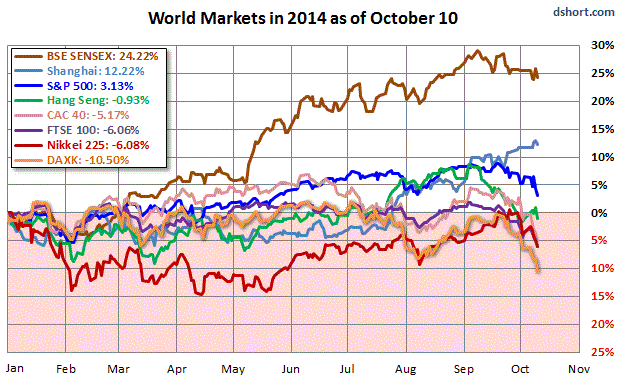 A New Age Of IMF Bailouts – Great Britain In The 1970s
A New Age Of IMF Bailouts – Great Britain In The 1970s
Hearing of IMF interventions generally conjures up images of developing nations (and the occasional Eurozone peripheral economy of late) facing some kind of financial difficulty. But it was actually Great Britain, the cradle of the industrialized world, which in 1976 became one of the first countries ever to be “bailed out” by the IMF in the modern sense of the term.
Now, previously the IMF had already provided financial assistance plenty of times, including to several advanced countries. Out of the 22 countries which were part of the OECD in the 1960s, no less than 8 negotiated new IMF programs during that decade, including France (1969), Japan (1962, 1964), Great Britain (1961-64, 1967, 1969) and even the US (1963-64). But these had been mostly to address short-term balance of payment issues.
Britain’s bailout in 1976, on the other hand, had strict conditionality elements with deep repercussions on the prevailing political ideology, sparking an intense private and public debate at the time as to whether the country should actually accept it. This episode inaugurated a much more interventionist approach by the IMF, anticipating many features of modern assistance programs.
The bailout arguably marked the culmination of a secular decline which had begun decades earlier. With the emergence of America and the Soviet Union as the global ideological and de facto superpowers at the end of World War II, the sun was setting fast upon the British Empire, which would fade away not long after. Still, in the postwar decades Great Britain offered plenty of prosperity, along with a free and vibrant society (who can ever forget the swinging sixties?), world-class music bands, abundant energy supplies and a respectable manufacturing sector.
Then came the 1970s. And things got bad pretty quickly.
Some Historical Context
The Labor Party was elected with a landslide majority in 1945 against the iconic wartime leader Sir Winston Churchill of the Conservative Party. Sweeping economic reforms were promptly introduced: the creation of a welfare state with national health, pensions and social security; industries were nationalized, seeking to broaden the state-planned manufacturing vitality during the war years; and taxes were raised to pay for the whole thing.
As Britain emerged from the wartime devastation, the economy got better and better, and accelerated in earnest after Churchill’s return to power in 1951. However, things were beginning to heat up abroad, with war raging in Korea, waves of Arab nationalism following the creation of the State of Israel and an increasingly belligerent Soviet Union. The Suez crisis of 1956 weakened Britain’s global standing and the government’s reputation, leading to the resignation of Anthony Eden, the Conservative Prime Minister who had succeeded Churchill.
But the economy managed to remain fairly robust with low unemployment into the 1960s, aided by tax cuts and other stimulative policies. Nevertheless, this was a time of change. Harold Wilson, the Labor party leader, ended 13 years of Conservative rule with a narrow victory in 1964 before increasing his majority in 1966. But despite the traditionally “euroskeptic” Conservatives losing their grip on power, Britain’s second attempt to join the European Economic Community (‘EEC’) was once again vetoed by France’s President, Charles de Gaulle, in 1967.
At the same time, Britain’s increasing lack of competitiveness internationally was starting to become very apparent. The government eventually devalued the pound in 1967 to stem the continuous outflow of gold and dollar reserves. By the end of the decade, the swinging sixties were no longer swinging all that much. And Wilson was surprisingly voted out of power in 1970.
In came a new Conservative government led by Edward Heath. And that’s when things started to get interesting.
This post was published at Zero Hedge on 10/12/2014.
 Late into Friday’s major market selloff, a completely unfounded rumor emerged out of nowhere, seeking to rekindle the BTFD spirits, that with central bank intervention from both the BOJ and ECB already priced in, and with the Fed still in taper mode (if not for much longer should the S&P dump accelerate), that the last central-planner wildcard, China, would join the fray and a major monetary gusher would come out of Beijing over the weekend to halt the slide. Alas, we have bad news for said BTFDers: just hours before futures are set to open on Sunday afternoon, the chief economist at China’s central bank said Saturday that he doesn’t see any reason for large-scale fiscal or monetary stimulus ‘in the foreseeable future’ despite slowing growth in the world’s second-largest economy and disagreements about the depth and timing of economic overhauls.
Late into Friday’s major market selloff, a completely unfounded rumor emerged out of nowhere, seeking to rekindle the BTFD spirits, that with central bank intervention from both the BOJ and ECB already priced in, and with the Fed still in taper mode (if not for much longer should the S&P dump accelerate), that the last central-planner wildcard, China, would join the fray and a major monetary gusher would come out of Beijing over the weekend to halt the slide. Alas, we have bad news for said BTFDers: just hours before futures are set to open on Sunday afternoon, the chief economist at China’s central bank said Saturday that he doesn’t see any reason for large-scale fiscal or monetary stimulus ‘in the foreseeable future’ despite slowing growth in the world’s second-largest economy and disagreements about the depth and timing of economic overhauls.



















 Follow on Twitter
Follow on Twitter
Recent Comments